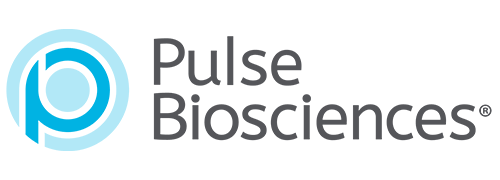News
- Multi-center study with leading researchers demonstrates significant efficacy with over 99.5% of Sebaceous Hyperplasia (SH) lesions treated with Nano-Pulse Stimulation™ (NPS™) technology rated as clear or mostly clear by investigators
- Second successful application of NPS™ platform advances the march to commercialization in the aesthetic dermatology market
This SH study builds upon previous study results showing the safety and clinically meaningful outcomes of NPS treatment to remove Seborrheic Keratosis lesions. Further, successful elimination of Sebaceous Hyperplasia lesions substantiates the unique ability of NPS to penetrate into the dermis and target deeper cellular structures, such as the sebaceous gland, without damaging the surrounding dermis. No adverse events were reported during the course of either the SH study or SK study.
The Sebaceous Hyperplasia clinical study enrolled 73 patients, over the course of two months, each with up to four facial lesions. Patients received one or two non-thermal NPS treatments per lesion at five prestigious centers in the U.S. The study’s primary success measurement was the degree of clearing of benign SH lesions as rated by the investigator at the final study visit. Since these lesions frequently appear on the face, another important outcome assessment was the return of the skin’s normal appearance after the lesion was removed.
99.5% of the treated lesions were assessed as clear or mostly clear by investigators at the 60-day post-treatment follow-up evaluation. Approximately 92% (n=203) of treated lesions were assessed as clear or mostly clear after a single NPS treatment. Patients rated 78% of lesion outcomes at study end as satisfied or mostly satisfied. In some cases, mild to moderate post-treatment hyperpigmentation was noted, particularly in patients with higher Fitzpatrick Skin Types.
“We are very excited about our NPS study findings and those of the other
four centers because we see many patients in the clinic with Sebaceous
Hyperplasia who opt out of treatment simply because current
thermal-based modalities lack reliable efficacy and pose a high risk of
damaged skin in the treated area,” said
In addition to Dr. Munavalli, other investigators in the SH study
included laser and cosmetic skin surgeon
“We were delighted that the histology results and clinical findings from
the Sebaceous Hyperplasia lesion study corroborated the high lesion
clearance rates observed in our first controlled study of NPS treatment
of Seborrheic Keratosis,” said
“We believe the results of this study represent an important development
for physicians and their patients who are affected by Sebaceous
Hyperplasia,” said
About Sebaceous Hyperplasia
Sebaceous Hyperplasia (SH) is a common, benign skin condition caused by
overactive sebaceous glands in adults of middle age or older. SH occurs
when the sebaceous glands become enlarged, creating shiny, yellowish
lesion or bumps, usually 2-4 millimeters in diameter and typically on
the face. SH affects an estimated 4.3 million patients in the U.S. based
on a 2018
About
Pulse Biosciences is a novel medical therapy company bringing to market its proprietary CellFX™ Nano-Pulse Stimulation™ (NPS™) platform. The Company’s CellFX NPS system provides a precise, non-thermal delivery of novel nanosecond duration energy pulses that impact cells in treated tissue while sparing acellular tissue. NPS’s unique mechanism of action disrupts the functions of internal cell structures while maintaining the outer cell membrane, initiating a cascade of events within the cell that results in regulated cell death. The unique characteristics of the Company’s NPS mechanism of action has the potential to significantly benefit patients across multiple medical applications, including dermatology, the Company’s first planned commercial application. In pre-clinical studies, NPS has demonstrated an ability to induce immunogenic cell death in several cancer cell lines. The Company believes its NPS platform technology may play a role in immuno-oncology as a focal tumor treatment that can initiate an adaptive immune response. More information can be found at www.pulsebiosciences.com.
Forward-Looking Statements
All statements in this press release that are not historical are
forward-looking statements, including, among other things, statements
relating to Pulse Biosciences’ expectations regarding regulatory
clearance and the timing of FDA filings or approvals, the mechanism of
action of NPS treatments, current and planned future clinical studies,
other matters related to its pipeline of product candidates, future
financial performance and other future events. These statements are not
historical facts but rather are based on Pulse Biosciences’ current
expectations, estimates, and projections regarding Pulse Biosciences’
business, operations and other similar or related factors. Words such as
“may,” “will,” “could,” “would,” “should,” “anticipate,” “predict,”
“potential,” “continue,” “expects,” “intends,” “plans,” “projects,”
“believes,” “estimates,” and other similar or related expressions are
used to identify these forward-looking statements, although not all
forward-looking statements contain these words. You should not place
undue reliance on forward-looking statements because they involve known
and unknown risks, uncertainties, and assumptions that are difficult or
impossible to predict and, in some cases, beyond Pulse Biosciences’
control. Actual results may differ materially from those in the
forward-looking statements as a result of a number of factors, including
those described in Pulse Biosciences’ filings with the
CAUTION: Pulse Biosciences’ Nano-Pulse Stimulation (NPS) is an investigational use therapy.
View source version on businesswire.com: https://www.businesswire.com/news/home/20190107005373/en/
Source:
Investors:
Brian Dow
Sr. Vice President and Chief
Financial Officer
IR@pulsebiosciences.com
Gitanjali Jain Ogawa
Solebury Trout
gogawa@troutgroup.com
646-378-2949
Media:
Tosk Communications
Nadine D. Tosk, 504-453-8344
nadinepr@gmail.com
